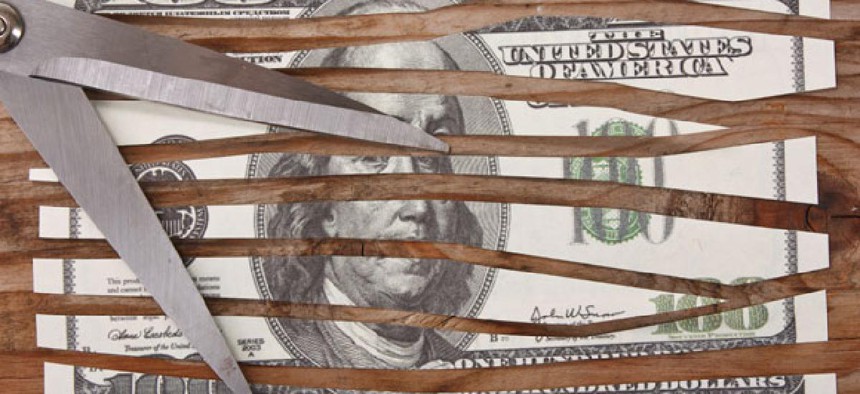
Shebeko//Shutterstock.com
Analysis: Next fiscal fight shifts focus to spending cuts
Now that the tax battle is over, Democrats will be in the hot seat.
Nearly everyone views the year-end fiscal-cliff fight as a debacle, but once that is accepted as a given, opinions tend to diverge. While one can say that the vast majority of Bush-era tax cuts were not just extended but made permanent—something that Republicans and conservatives should like—there were effectively no spending cuts, and in no meaningful way were entitlements trimmed or reformed.
People on either side could view the cup as either half-full or half-empty. But as a practical matter, the only area where the Left caved was to pick whom not to raise taxes on, giving in by allowing the definition of “middle class” to rise to $400,000 in annual income ($450,000 for a family), with the higher rates kicking in for income above that level. If only a family earning almost half-a-million dollars a year really were middle class. Other key provisions set the estate-tax rate at 40 percent (it was scheduled to rise from 35 to 55 percent), with an exemption on the first $5 million; created solutions for the alternative minimum tax and the “doc fix”; and increased the capital-gains rate from 15 to 20 percent.
But the next fight will come during that triple-witching period when Congress faces another sequestration battle, negotiations over raising the debt ceiling, and the possibility of a government shutdown if an agreement on funding for the balance of the fiscal year isn’t dealt with in time. It’s much more likely that Democrats will face more of a winter of discontent than Republicans. With tax rates now increased for all of those Democrats were willing to raise them on, the battleground will shift mostly to spending cuts and entitlement reform. Republican leaders’ claims that they won’t go along with anymore tax increases sound like wishful thinking; there will be more revenue found whether they like it or not. For the most part, though, it will be Democrats’ turn to have fiscal root-canal work done—without the benefit of anesthesia.
While the focus, until now, has been on the struggle between Republican leaders and their even more conservative base and caucus members, it will be up to President Obama and Democratic congressional leaders to deal with their party’s more exotic members. No one expected a fiscal-cliff deal effectively free of spending cuts—score one for Democrats—but that now has to change. The Democrats, who won the presidential race, expanded their Senate majority, and picked up seats in the House, will have a hard time dealing with the fact that they now have to endure pain.
The fact is that both parties are experiencing selective perception. There’s a great chart, developed last year by the White House Office of Management and Budget, that’s floating around town and sitting in a lot of PowerPoint decks. Covering the period from 1960 to 2011, it features two solid lines, one red and one blue, mapped against two horizontal dotted lines. The solid red line tracks spending as a percentage of gross domestic product for each year, and its corresponding dotted red line marks the overall average: 20 percent. The solid blue line, meanwhile, follows taxes as a percentage of GDP, and the dotted blue line marks the average: 18 percent.
What jumps out on the chart is that most recently both the spending and tax percentages are way out of whack with historic norms. The chart shows 2011 spending at 24.1 percent, not just significantly higher than the five-decade average of 20 percent, but much higher over the past few years than ever before. Meanwhile, it shows taxes at 15.4 percent, way below the 18 percent average and—over the past few years—lower than at any other time during the period.
To most partisans and ideologues, this chart is almost a Rorschach test. The eyes of liberals and Democrats tend immediately to go to the blue line that shows taxes in recent years running at historically low levels, while conservatives and Republicans’ eyes immediately go to the red line showing spending in recent years at unprecedented levels—unprecedented, at least, in the past half-century or so.
The year-end fight was a clumsy way of dealing with the blue line, but the next fight is going to be much more about that red line, and that is not a fight that Democrats will want to see. So for all of the focus and talk about the cleavages within the GOP and how unrealistic Republicans’ approach to taxes has been, we will now see a mirror-image debate over spending that will show Democrats to be equally culpable for the fiscal crisis that we find ourselves in.
This article appeared in the Tuesday, January 15, 2013 edition of National Journal Daily.
(Image via Shebeko / Shutterstock.com)






